I have long been interested in World War II aviation, possibly starting back in the days when the "12 O'Clock High" television series was on the air. This includes buying a WW II T-6 trainer that I never have enough time to really enjoy. Besides the actual planes, though, the whole concept of the air war has long intrigued me.
My wife has often commented on how many of the veterans at air shows and other events are so strongly focused on their WW II experiences. It's easy for me to understand, though. Imagine an average teenager enlisting or being drafted, then uprooted from a rather quiet life in the US and sent to a distant airbase in far off England, where you would face someone trying to kill you. Assuming you were lucky enough to survive, when you got home life was very likely to have been far less exciting or stressful.
I used to go to England on a regular basis for work. On many of the trips I could spot old airfields as we approached Heathrow. Both the RAF and the US Army Air Force had built bases that stretched across the country, turning it into what one book called "The world's largest aircraft carrier." Thousands of people had worked to build and operate those bases, but when the war ended, most of the facilities were abandoned and left to rot. Imagine how the former land owners must have felt when the air crews left and turned over the keys. "Thanks for the stay and sorry about the tons of concrete and buildings we're leaving on your farm. Good luck and bye." Well, as time passed, many of the runways were torn up for construction material. In fact, many of the motorway interchanges were built recycling old airfields. Some buildings were converted to other uses, but most were just left there as it was cheaper than tearing them down.
Late one day in 1985 I decided to head out to East Anglia to see what was left of some of the bases. It was a memorable afternoon indeed. In some cases the base was completely gone, with the runways ripped up and all of the buildings torn down. In others it was exactly like the beginning of the film version of "12 O'Clock High" - empty runways stretched far off into the distance, waiting for the planes that would never come. It was really moving to walk through these sites and think about all of the sacrifices others had made for us. I was able to visit a few sites that day, including the old field at Thorpe Abbotts which had been home to the famous 100th Bomb Group. They had a nice museum in the old control tower, but for me the real thrill came in exploring the nearby woods. I was astonished at the number of ruined buildings that were all but buried in the vegetation. I'm not overly thrilled with the photos I took that day, as I didn't have a flash with me and the foliage made it a real challenge. I don't remember what film I used but suffice it to say it was not a high speed stock. Still, I'm glad I was able to take them and I hope you will enjoy them.
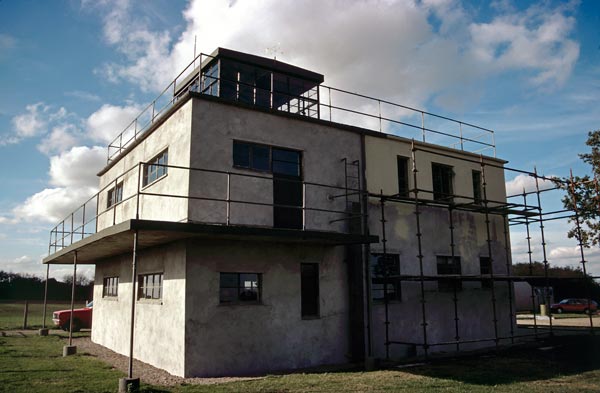
Most of the old control towers are long gone or bear little resemblance to their World War II days. The tower at Thorpe Abbotts is a welcome exception. Seen here under restoration, it holds a nice collection of artifacts from the old base.
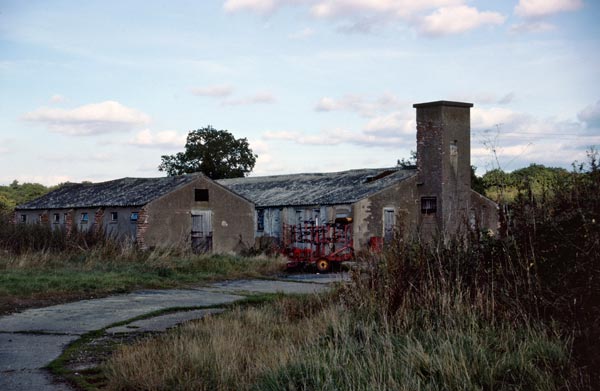
Most of the site is an active farm, and some of the buildings were being used to store machinery or supplies. One site lists these buildings as having been used as shower facilities during the war.

Hay bales sit silently where mighty B-17s once flew. It was a moving experience to stand there and reflect on why all of this had been built in the first place.
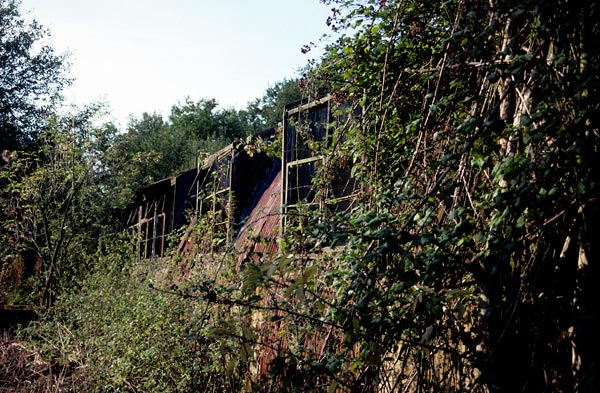
As I wandered around the area I was amazed to see the ruins of a Nissen hut all but buried under the foliage. These had to have been some of the nastiest vines I have ever encountered, with huge thorns. They really made it tough to move around the place.
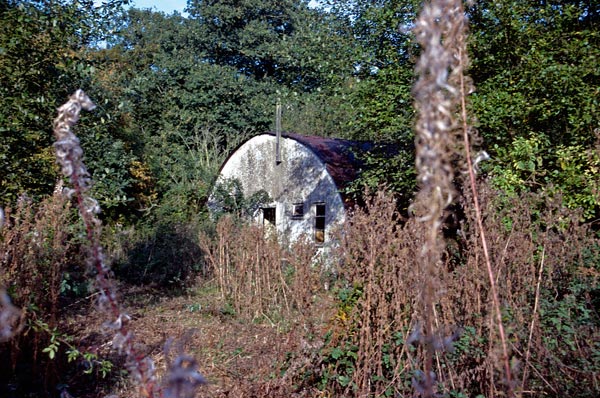
This lonely looking place was once the base hospital.
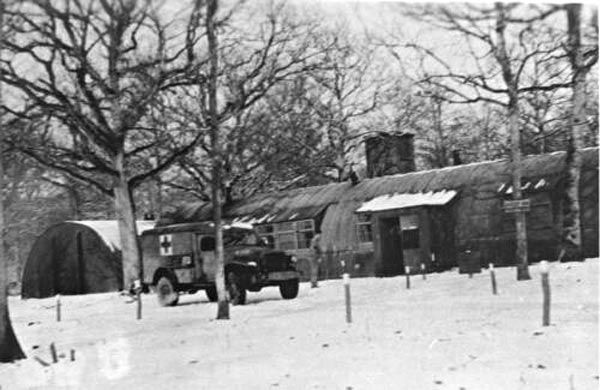
Here's how the hospital area looked during the war. It was simply amazing to see how nature had reclaimed so much of the area.
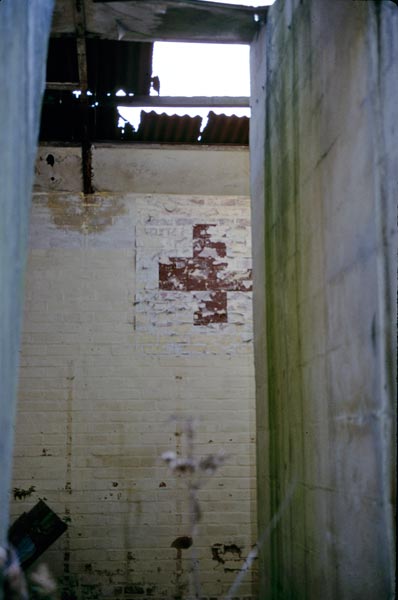
I was quite surprised to see that this bit of artwork had survived all of those years.
I made a brief stop back at Thorpe Abbotts in 1987. Like so many of the other bases in the area, the main runway was being pulled up then. I wasn't able to look for the hospital again, and by now if it's there at all I'm sure it has crumbled into a pile of rubble.

After I left Thorpe Abbotts I visited a number of other air field sites. Here's one of them being devoured as the runway was being pulled up, lit by the headlights of my rental car. Unfortunately I can't find my notes with the name of the base. As the years go by most of these fields will no longer be recognizable at all.